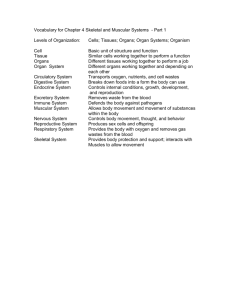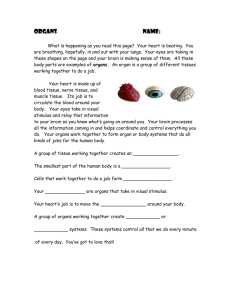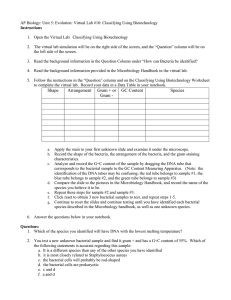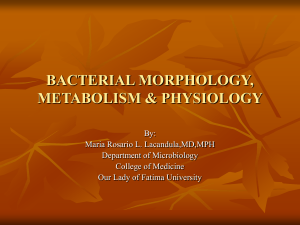Study guide U 5 and 6
advertisement
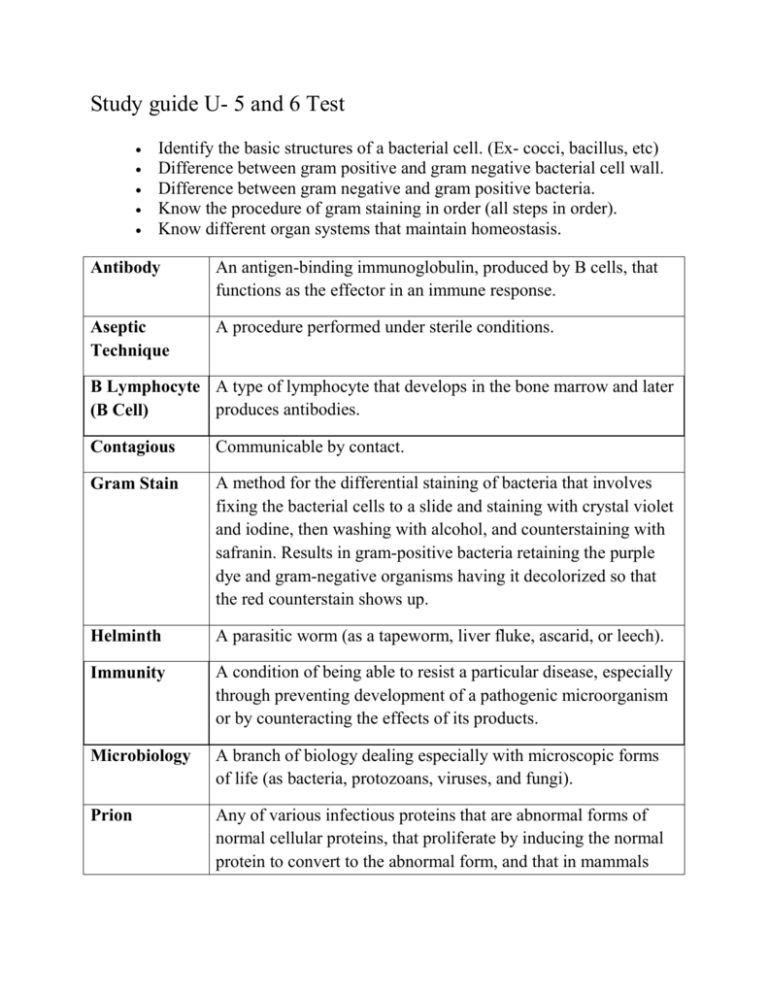
Study guide U- 5 and 6 Test Identify the basic structures of a bacterial cell. (Ex- cocci, bacillus, etc) Difference between gram positive and gram negative bacterial cell wall. Difference between gram negative and gram positive bacteria. Know the procedure of gram staining in order (all steps in order). Know different organ systems that maintain homeostasis. Antibody An antigen-binding immunoglobulin, produced by B cells, that functions as the effector in an immune response. Aseptic Technique A procedure performed under sterile conditions. B Lymphocyte A type of lymphocyte that develops in the bone marrow and later produces antibodies. (B Cell) Contagious Communicable by contact. Gram Stain A method for the differential staining of bacteria that involves fixing the bacterial cells to a slide and staining with crystal violet and iodine, then washing with alcohol, and counterstaining with safranin. Results in gram-positive bacteria retaining the purple dye and gram-negative organisms having it decolorized so that the red counterstain shows up. Helminth A parasitic worm (as a tapeworm, liver fluke, ascarid, or leech). Immunity A condition of being able to resist a particular disease, especially through preventing development of a pathogenic microorganism or by counteracting the effects of its products. Microbiology A branch of biology dealing especially with microscopic forms of life (as bacteria, protozoans, viruses, and fungi). Prion Any of various infectious proteins that are abnormal forms of normal cellular proteins, that proliferate by inducing the normal protein to convert to the abnormal form, and that in mammals include pathogenic forms. Spirillum A spiral-shaped bacterium. T Lymphocyte A type of lymphocyte responsible for cell-mediated immunity that differentiates under the influence of the thymus. (T Cells) Transmission The way a microbial organism moves from one host to another. Cardiovascula The transport system of the body responsible for carrying oxygen and nutrients to the body and carrying away carbon dioxide and r System other wastes; composed of the heart, blood vessels, and blood. Digestive System The group of organs that break down foods into chemical components that the body can absorb and use for energy and for building and repairing cells and tissues. Nervous System The bodily system that in vertebrates is made up of the brain and spinal cord, nerves, ganglia, and parts of the receptor organs and that receives and interprets stimuli and transmits impulses to the effector organs. Organ Collection of tissues which performs a particular function or set of functions in an animal's body. The heart, brain, and skin are three organs found in most animals. Organs are composed of tissues and may be organized into larger organ systems. Respiratory System A system of organs, functioning in the process of gas exchange between the body and the environment, consisting especially of the nose, nasal passages, nasopharynx, larynx, trachea, bronchi, and lungs. System A collection of components organized to accomplish a specific function or set of functions.



